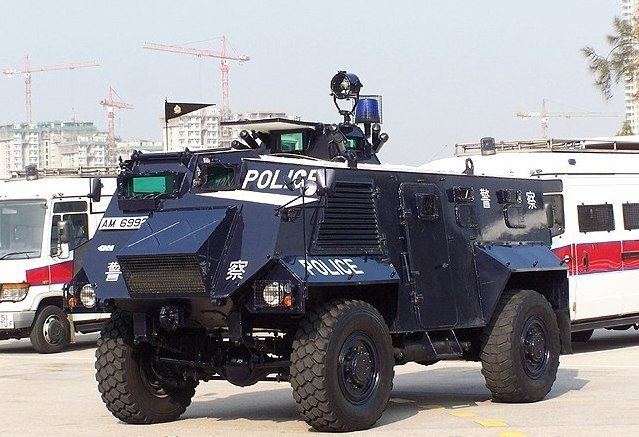Weight 10.6 tonnes | Used by Operators Length 5.17 m (17 ft 0 in) | |
 | ||
Manufacturer GKN SankeyFormerly by Alvis plc | ||
The Saxon is an armoured personnel carrier used by the British Army and supplied in small numbers to various overseas organisations. It was developed by GKN Sankey from earlier projects, AT 100 IS and AT104, and was due to be replaced by the Future Rapid Effect System. It was first produced by Alvis plc.
Contents
Design
The Saxon was intended to act as a cheap but efficient "battle-taxi" for units that would have to make long journeys from the UK to reinforce the British Army of the Rhine. It was made as a relatively low cost armoured personnel carrier based on a revised Bedford M series 4x4 truck chassis and other commercially available components. As a lightly armoured wheeled vehicle, it is much faster - especially on roads - and easier to maintain than a tracked vehicle. Indeed, it shares many parts with commercial trucks, reducing the operating cost. It is armoured against small-arms fire and shell splinters, but is not intended to stand up to any anti-vehicle weaponry. The vehicle has a single machine gun for local air defence.
The Saxon's hull is welded steel with a V-shaped under-chassis plate to deflect mine detonations. Seating is provided in the rear for up to ten troops, although eight is a more comfortable load if all their equipment is included. There is an equipment stowage area on the hull roof.
Some Saxon IS, or Saxon Patrol, vehicles were acquired for service in Northern Ireland, serving as ambulances or troop carriers, which had extendible wings that could be used as protective shields during a riot. Compared to the standard model, these have various minor modifications intended for internal security operations, such as searchlights and wire cutters.
History
The first operational Saxons were deployed in Germany in 1983, to equip mechanised infantry battalions. The Saxon has now been withdrawn from service in HM Armed Forces, but 147 are kept in storage. The Saxon has been deployed to places such as Bahrain, Brunei, Bosnia, Malaysia, Oman, Iraq and Afghanistan.
Seven Saxons were ordered by the Royal Hong Kong Police from GKN Sankey in 1987 and delivered in 1988 where they replaced 15 Saracens. They were assigned to the Police Tactical Unit and remained there until withdrawn in 2009
75 Saxons were sold to Ukraine reportedly under a contract made in 2013, i.e. predating the start of the War in Donbass. The Ukraine military announced the deal on 5 December 2014. The former chief commander of British land-forces, General Sir Richard Dannatt, said that supplying the vehicles to Ukraine was "immoral" as they were "useless".
Variants
The Saxon can be fitted out as:
